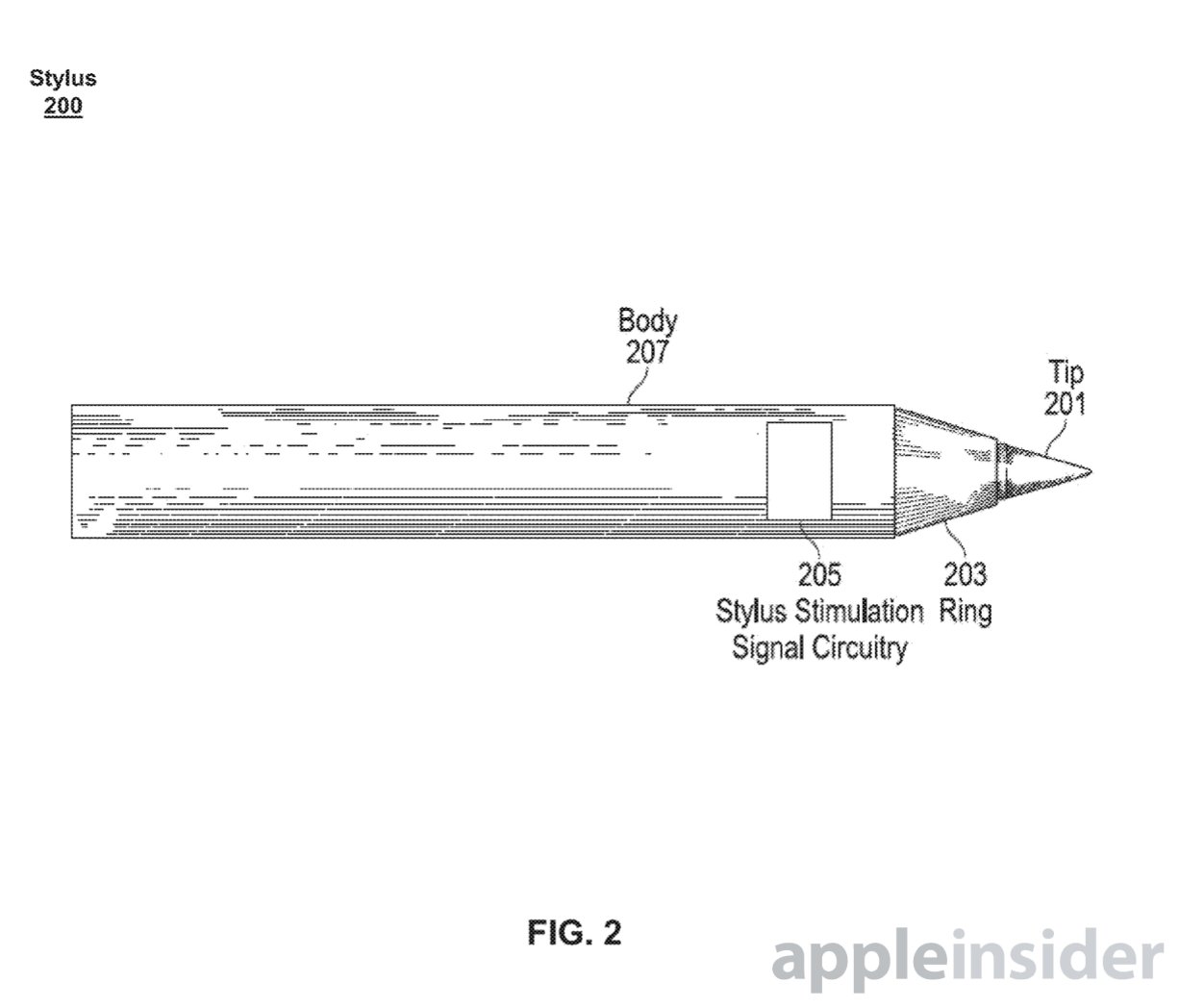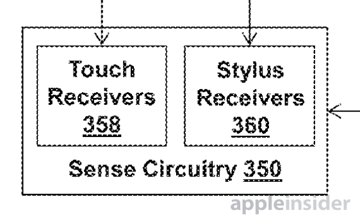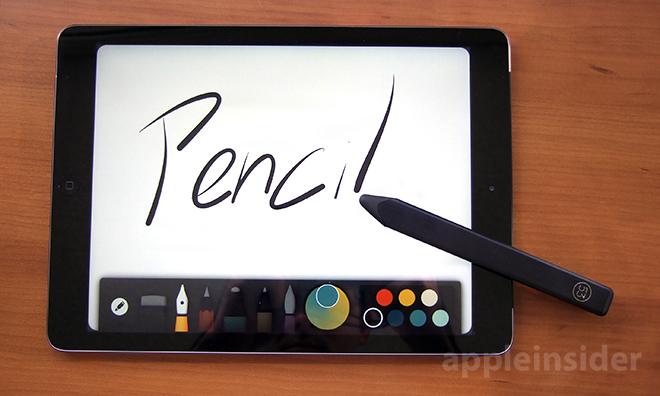As recent rumors have suggested Apple could offer a simple stylus to enhance a larger iPad model, a new patent application shows what kind of improved pen-based input technology the company has been working on behind the scenes.
Apple's investigations into stylus support for touchscreen devices was disclosed in a new filing published by the U.S. Patent and Trademark Office this week, discovered by AppleInsider. The proposed invention, entitled Superheterodyne Pen Stimulus Signal Receiver," describes a device that could have a unique frequency for stylus-based input that would be less than that of a traditional fingertip touch signal.
In the filing, Apple notes that most conventional styluses have a bulky tip made of a material capable of interacting with a touch-sensitive device. These devices are often meant to emulate a user's finger for compatibility with modern touchscreens, which are meant to be controlled with fingertips.
But Apple says that these conventional styluses, by their nature, lack the precision and control of traditional writing instruments, like a pen and paper.
In the proposed invention, Apple says its goal is to create a stylus capable of generating more precise input than a fingertip or current styluses can allow. Apple's solution is additional hardware that it says would not consume more power than a conventional touch-sensitive device.
Apple's method would use a "superheterodyne receiver," which can take an input signal and convert it to another frequency. The technology actually dates back to the origins of radio transmissions, and was developed by a U.S. soldier during Wold War I.
Virtually all modern radio receivers use "superhet" technology for superior selectivity and sensitivity. But in Apple's more modern use, a hardware demodulator inside a device like an iPad would convert stylus touch input signals into an intermediate frequency signal less than that of a traditional fingertip touch signal.
In short, Apple's system would feature a touch sensor that could detect the difference between a fingertip touch and a stylus touch, and offer more precise input accordingly.
The new patent application comes soon after a recent rumor suggested Apple could launch a simple stylus alongside an anticipated 12.9-inch "iPad Pro" later this year. Analyst Ming-Chi Kuo of KGI Securities also noted that a stylus is more precise than a person's fingers, which could make it a more convenient method of input than a keyboard and mouse in some cases.
According to Kuo, Apple is likely to launch the stylus accessory as an optional add-on, rather than including it alongside the jumbo iPad. He believes the stylus will feature basic technology in its first iteration, while future models could add more advanced features like 3D handwriting.
Though the company has publicly panned pen-based input for years, Apple's interest in stylus-based input is not new. This week's filing is just the latest in a string (1, 2, 3, 4, 5, 6) of stylus concepts the company has explored behind the scenes.
The superhet stylus signal receiver concept, published this week, was first filed with the USPTO by Apple in October of 2013. The proposed invention is credited to Shahrooz Shahparnia, whose LinkedIn profile states he is a touch ASIC and sensor architect at Apple.
 Neil Hughes
Neil Hughes









-m.jpg)






 Christine McKee
Christine McKee
 Malcolm Owen
Malcolm Owen
 Marko Zivkovic
Marko Zivkovic

 Andrew Orr
Andrew Orr
 Andrew O'Hara
Andrew O'Hara
 William Gallagher
William Gallagher




-m.jpg)



55 Comments
If Apple could make a pen better than Wacom I'd be all over that.
A pen has it's uses, but should never be the main input on a mobile device with a touch screen. Using your fingers is natural. I remember back using my HP iPaq Windows Mobile 5 PDA. It of course used a Pen as it's only real way to Input. Not that you could use your fingers anyway if you could with all the little boxes and drop down menu's and whatnot. Which is why later they went away from that and came up with the Metro interface designed for touch. There's nothing wrong with a Pen. It comes in handy for Drawing Apps and whatnot. I can't draw worth a crap, and don't have much need for a pen and I'm sure most don't have a need. Seeing results of pictures people have done on iPads when there's no Pen support is quite amazing. That's real talent. A larger iPad, a Pen starts to make some sense, but again only for a few people. Larger Tablets in the past have been huge, bulky and heavy. You didn't want to carry the thing around, and hold it on your Lap. With how thin and light ipads have become, making a larger version shouldn't be to bad. I like my iPad 3 and the screen size. I think the Mini, or any 7-8" tablet is almost pointless. If you're going to have a tablet, something quite a bit bigger then your phone makes it worth it. Slightly larger seems pointless to me.
So how many pen patents do we have from Apple now? At least 20? When do we see an actual product out of them?
[quote name="Rogifan" url="/t/184560/apples-stylus-receiver-concept-would-improve-the-precision-of-digital-pen-based-input#post_2668368"]So how many pen patents do we have from Apple now? At least 20? When do we see an actual product out of them?[/quote] Actually, Apple buying Wacom would be a nice fit and they'd capture all of that IP.
Actually, Apple buying Wacom would be a nice fit and they'd capture all of that IP.
I have used Wacom's tablet inputs in the past and they have been great. The Intuos Creative Stylus 2 for the iPad is not a great product (depending on which app you intend to use it with). An Apple developed stylus would be very welcome.